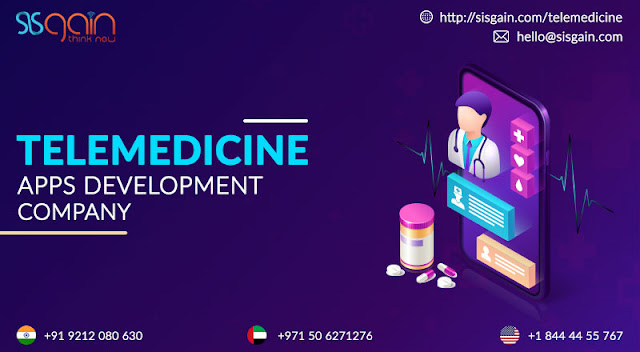The Guidelines To White label Telemedicine Practices : A Doctor on Call
Telemedicine
is a practice that was introduced a couple of decades back, but it has gained
significant momentum over the recent
years due to several factors like, advancement in technology, rise in awareness
and the outbreak of the pandemic. There has been a drastic shift from the
primitive methods of attaining healthcare to the newly introduced telemedicine software development.
Telemedicine is defined as the extension of clinical facilities to the people
using the digital platform. This has provided us with a lot of advantages
including remote accessibility, hygienic contactless medical procedure, higher
affordability and a smoothened workflow.
Leading
software development companies like SISGAIN have developed innovative and
functional software to provide white label telemedicine facilities to the ones reaching
out. It has provided several features and a user friendly interface to
facilitate accessibility by a large section of population. The software is easy
to use and access. It facilitates the transfer of medical data and allows other
prospects like on-time chat and video conferencing with the clinician. Thus, it
has emerged to be the leading Telemedicine software platforms in Africa, Canada and other
parts of the world. SISGAIN is a trusted company and the telemedicine app development solutions are HIPAA compliant to ensure one’s medical security.
However, white label telemedicine practices need to abide by certain guidelines to ensure a
patient’s as well as the medical professional’s safety. These guidelines are
laid down by the government and need to be strictly followed by every telemed provider.
This would lead to an overall security of the process. Guidelines are important
for the smooth functioning of any prospect and it prevents the misuse of data
and builds trust amidst the provider and the patient. Similarly, the patients
should look into the guidelines before availing a facility to prevent
complications in the later stages. Discussed below, are certain guidelines that
need to be abided by every telemedicine practice.
- When to resort to telemedicine?
Telemedicine
works exceptionally well when treating chronic diseases like diabetes,
allergies and chronic bronchitis. It studies the symptoms and can come up with
remedies remotely. However, telemedicine software development should not be used for illnesses that
require in person testing due to threatening symptoms. In case of it, one shall
consult a physician personally and get himself or herself tested. In case of an
emergency, one should call 911 or go to
the ER.
- How to prescribe?
A
medical practitioner can prescribe diagnostics only on a video conference where
he or she can study the symptoms of the patient. The video conference acts as a
substitute for an in-person consultation and is therefore safe. Once, the medical
practitioner has studied the vital signs remotely, he or she can prescribe. A
prescription over a call is acceptable only if the medical expert has prior
knowledge about the patient’s health.
- How far is the patient informed?
Before
the visit, telemedicine providers should explain the concept of telemedicine to
the patients and how it works. This would enable the patient to grasp the
concept and then decide on whether to give consent to it or not. The patients
should be able to access the information and the providers must ensure that
nothing is concealed from the patient regarding his or her health.
- What to do during an emergency?
A plan
shall be created regarding an emergency beforehand. However, in case of
severity, it is better to consult a medical expert in person.
- Information needed for diagnosis
Important
information should be accessed from the patient before the diagnosis. Such
information may include a patient’s identity documents, medical history and
allergy reports.
- How about the billing?
The
billing information should be provided to the patients before the e-visit. The
patient should be informed about the charges and formalities beforehand for a
transparent analysis.






thanks for article. please visit my website.Doctor On Call UAE
ReplyDelete